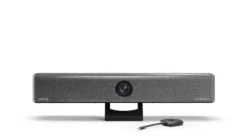Understanding the FCC’s New Unlicensed Wireless Microphone Registration Process
Mar 11, 2013 4:25 PM
While the FCC’s removal of geographic restrictions on white space devices will expand broadband access and increase connectivity, it may cause interference issues with wireless microphones, intercoms, and in-ear monitors (IEMs) in use at local venues. To prevent this, the FCC has set aside dedicated, unused TV channels for wireless microphones. Organizations can apply to reserve these channels for their wireless mics; prohibiting white space devices from operating in the same channels. This new service is currently in place throughout the entire east coast, with the anticipation of a nationwide release. Professional Wireless Systems (PWS) participated in a beta test of this new system, giving feedback to the FCC about the registration website. Drawing on this experience, the company has developed some tips for navigating the registration process.
1. Gather all of the required data. It takes 30 days for the FCC to review and approve your registration before you can turn on your channel reservation. To avoid any delays, gather all of the following information and double-check its accuracy:
Your FCC Registration Number (FRN): If you do not have an existing account, go to fcc.gov/uls and click “New User.”
The latitude and longitude of your exact location in the DMS (Degrees, Minutes, Seconds) format: If you look up your address in Bing Maps or a similar tool, this information will appear under your address. You can convert this format to DMS using: http://transition.fcc.gov/mb/audio/bickel/DDDMMSS-decimal.html
Your local “free” and available TV channels: Type in your latitude/longitude information at whitespaces.spectrumbridge.com/whitespaces. Be sure to select the “Wireless Microphone” option. Also, zoom in on the map to ensure you have the correct location; you need to be within 400 meters (about 1300ft.).
The TV channels in which you are currently operating your wireless mics: Check this chart: www.professionalwireless.com/tv-channels
Your schedule for reoccurring wireless microphone use (up to one year): You can adjust your hours and make other small changes to the schedule at any time. Major changes, however, will require going through the FCC’s approval process again. Consider submitting your non-reoccurring special events at this time.
2. Make your registration request. When you log in with your FRN and password at fcc.gov/uls, click the link on the left and you’re ready to begin the process.
3. Certify your use of all “practically available” free and available channels. Confirm your use of between six and eight wireless microphones inside each local TV channel, then look up your locationat http://whitespaces.spectrumbridge.com/whitespaces to determine the available channels. There, you’ll see two “exclusive” TV channels—one above channel 37 and another below.
Next, you’ll see “available” TV channels listed. You’re supposed to use all of these, with six to eight wireless mics in each, before you ask for “white space” channels. Although professional-grade wireless mics haven’t been made in the VHF bands for more than 10 years, the VHF channels are included in the list. Attach a text file to your application explaining that you’ve used the channels available.
4. Consider the use of wireless intercom systems. As of these systems generally have two transmit frequencies below channel 37 and four receive frequencies above it, they will not meet the FCC’s minimum of six to eight frequencies in each available or reserved TV channels. Attach a text file to your application explaining that the equipment has a “duplex gap,” forcing you to use two different TV channels in order to operate the intercom system.
5. Monitor the FCC website for public comment or objections. Once you submit the application, it will be listed on the FCC website for seven days. This allows anyone in your local area to comment or object to your request. Check the website eight days after submitting your application to make any replies. You will only have seven days to reply.
The FCC uses the remainder of the 30 days to review your application and issue its decision. Even though you will have clearance throughout the year-long period to use the designated channels at the allotted time slots, if another event arises, you may need to go through the FCC’s permission process again. The same holds true for the end of the year—requests are not automatically renewed annually.










